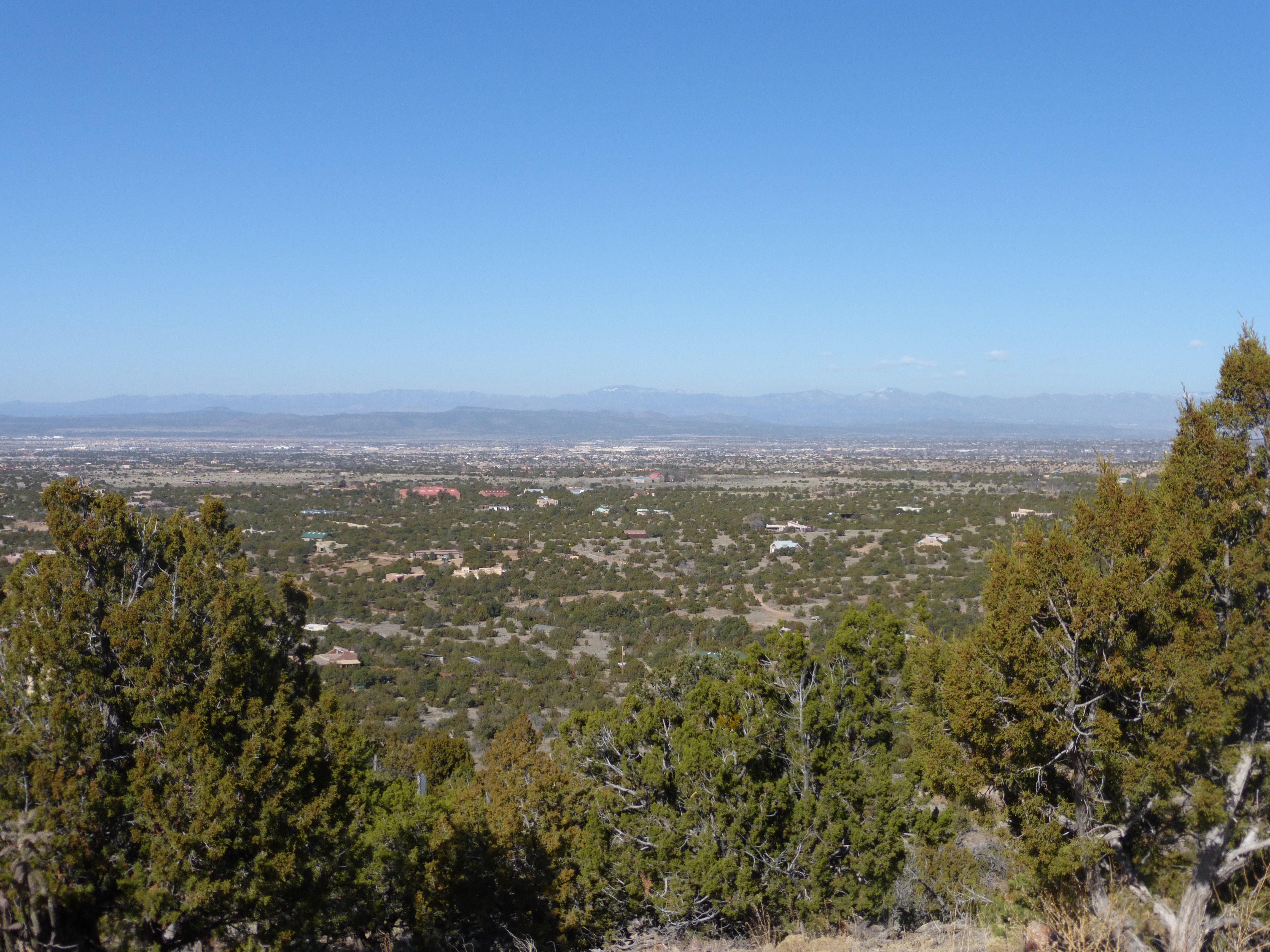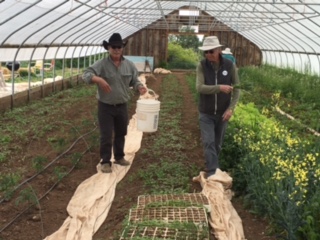
By Patricia Frazier
Reprinted from the Fall/Winter 2016 issue of Applied Biodynamics, the periodical of the Josephine Porter Institute (JPI). Visit their site to see free sample issues, subscribe, or purchase single issues.
Fifth installment in the Tierra Viva series, the theme of the 2016 Biodynamic Conference in Santa Fe, NM, November 16-20.
My neighbor state, New Mexico, has always had a tender spot in my heart. Having lived and farmed in Colorado most of my adult life, New Mexico represents a refuge of beauty, spiritual renewal, and warmth in the depths of winter, found in her warmer climate south of here. Her red rock canyons, abundant hot springs, clear starry skies, and beautiful mountains are food for the soul and full of indigenous wisdom from her centuries of stewardship by Native elders. So, when the Biodynamic Association (BDA) chose Santa Fe, New Mexico, as the site for their upcoming national conference, I was happy to know the conference would be so close to home and was excited to meet fellow farmers there.
One fellow farmer, Melinda Bateman, of Morning Star Farm in Arroyo Seco, just outside of Taos, was already well known to me. Melinda has joined biodynamic workshops here in Western Colorado for a few years, making preparations at Peace and Plenty Farm and attending several Enzo Nastati seminars in Paonia, Colorado. Melinda has a small market farm and serves the Taos community from her 7,000-foot elevation. It is a challenging growing environment with a short but intense season. Melinda has created harmony with the forces of nature there with a large season-extending greenhouse, crops appropriate to the season, and well-intentioned and regular biodynamic practices on her land. Her luscious garlic is to die for and her greens have graced the tables of Taos restaurants for over twenty years. On a small but productive piece of land, Melinda farms mostly as a sole proprietor and apprentices intern in the intricacies of high desert farming biodynamically. This is a very unique skillset here in the U.S. and one that will hopefully develop more fully as a result of the influence of the Biodynamic Association’s national conference in November.
As a sole proprietor, Melinda has been active in seeking the fellowship of other biodynamic practitioners here in Colorado, but due to the distances between communities in New Mexico, she has related the difficulty in establishing real community there. Similarly, when the Biodynamic Association began its exploration of biodynamic practitioners in the surrounding community to support the conference with local knowledge, there were but a few to meet. A new opportunity for community building was born.
Community building is an activity within the biodynamic farming community that is essential to biodynamic practitioners and consumers,and reflects the origins of the movement. Unlike the sheer numbers of organic farmers in our communities these days with multitudes of web-based blogs, supportive publications, grower cooperatives, and many market farms, the growth of biodynamic agriculture in farming communities has been slower to be realized. There are a number of factors for this slow but steady increase in awareness. One factor is the high level of integrity in farming practices required of a farmer in biodynamic agriculture. A friend of mine, Brook LeVan of Sustainable Settings in Carbondale, Colorado, put it this way:
“Biodynamic agriculture is beyond organic. The standards we are adhering to for Demeter Certification of our farm are tough but fair. The standards require us to make long lasting changes in how we view and support our farm organism. But the change in me as a farmer is the most profound. I know now that we are farming with angels.”
That statement has always had a profound impact upon me as a farmer because it calls into awareness the life force beyond our fertility inputs, NPK measurements, and percent organic matter. This life force knits that of human beings with the life force of the mineral, plant, and animal world in sometimes incomprehensible, but nonetheless powerful, ways. The recognition and acknowledgement of these forces of life requires a discipline of observation and faith in the farmer developing over time and in communion with other farmers and our communities who share these insights and values. The result of developing these awareness skills is a profound respect and strong nurturing behaviors for our farms and communities. We protect our farms, plant communities, animals, air, and water so that our food can be of highest quality to support further human development of these faculties of awareness.
Another factor responsible for the slow but steady, grassroots growth of biodynamic agriculture is the difficult but necessary development of a common language between communities of knowledge. Development of a language between the conventional scientific community and the unconventional qualitative, life force-based biodynamic agricultural community that can articulate outcomes of biodynamic practices requires awareness and communication. This kind of awareness and communication happens best on the ground and within human interaction. Outlined within these two factors is the case for active community building by biodynamic practitioners who are willing to take the time to interact and educate others about the unique gifts that biodynamic agriculture offers to the healing of our earth.
To facilitate this community building exercise, an intention was set between Melinda Bateman of Morning Star Farm; Pat Frazier, Board President of Josephine Porter Institute for Applied Biodynamics (JPI); and Robert Karp, Co-Director of the Biodynamic Association to lead a field day at Melinda’s farm in Arroyo Seco, New Mexico, at the beginning of this farming season. The intention of the gathering was building community and support for the creation of a local biodynamic group to further biodynamic agriculture education in the region. That region includes Santa Fe and Taos, New Mexico, and all surrounding communities within several hundred miles. The Biodynamic Association and the local Western Colorado BD group promoted the gathering over the three months prior. Attendance was varied and enthusiastic ranging from back yard gardeners to biodynamic farmers, and from author Steven McFadden to experienced local biodynamic compost maker Maggie Lee. Teachers from the Santa Fe Waldorf School, young farmers, biodynamic apprentices, and enthusiastic participants in agricultural advocacy and intentional communities from Santa Fe and surrounding communities rounded out the attendance.
Field day at Morning Star Farm
The day was spent in many hands-on activities from compost building and inoculation with biodynamic and homeodynamic preparations, a spray of an Enzo Nastati-inspired preparation (Purifier/Harmonizer spray) over the entire farm, and group meditation circle led by Robert Karp following the sprays. In the afternoon, a discussion about next steps for solidifying the relationships and community was held, and all shared a beautiful, local meal. Solid commitments by the local group were made to continue several biodynamic community activities throughout the summer and fall leading up to the national conference. Since the gathering, there has been a meet-up and preparation making activity this summer, and another is planned for late September where BD #500 (horn manure) and barrel compost will be made and sprayed at various locations in and around Santa Fe as an intentional gesture for continued support and recognition of the awareness being cultivated for biodynamic agriculture in the Southwest region of the US.
I hope you can join us in Santa Fe for the Biodynamic Association’s National 2016 Conference, “Tierra Viva: Farming the Living Earth,” where the impulse to strengthen biodynamic agriculture will continue to grow. There will be many types of educational offerings from indigenous wisdom of the Americas, to social justice and policy advocacy, to practical hands-on education in applying biodynamic agriculture practices for beginners to advanced practitioners. Stop and visit us at the JPI booth. If community building is of interest to you, a workshop held by Barefoot Farmer Jeff Poppen, Pat Frazier, Nashville area activist Hilary Higginbotham, and Jim Fullmer, Co-Director of Demeter USA, will outline practical steps and experiences of building community in areas of the country where strong biodynamic communities now exist. In addition, members Lloyd Nelson, Patricia Frazier, and Brook LeVan of the Western Colorado BD group will lead a hands-on preparation making workshop as a full-day pre-conference event. Registration and description of the full conference is now available at www.biodynamics.com/conference.
Patricia Frazier is the president of the board of directors of the Josephine Porter Institute for Applied Biodynamics (JPI). She is a member of the Fellowship of Preparation Makers and sits on two of their committees, including chairing the conference planning for the 2014 Fellowship Conference. She is a member of the Biodynamic Educators Collaborative. Pat and her family have a small biodynamic homestead, nursery, and family dairy in Western Colorado where all of the preparation herbs are grown and used in making all of the biodynamic preparations. Permaculture design is another of her passions and its marriage with biodynamics is included in her two-week in-residence permaculture class each summer.


Add new comment